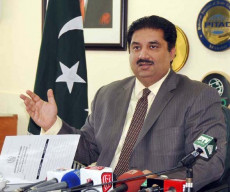
The WTO regime prohibits export subsidies, and yet countries find ways, sometimes not so ingenious, to do so. Yes, legal battles ensue, most notably between the US and the EU, and, indeed, Indian export subsidies provide ammunition to the opponents of normalised trade relations with India, but often a challenged subsidy is replaced by a more invidious one. Life goes on.
There is sufficient empirical evidence to suggest that export subsidies do more harm than good to a country’s long-term export interests. They create distortions, and more importantly, provide perverse incentives that make an exporter’s focus shift from product and market development to rent-seeking.
In Pakistan’s case, we do not have the fiscal space to subsidise our exports. Where we do, refunds and reimbursements lose out to more pressing demands that the depleted government coffers are already straining to meet – after all, there are limits to borrowing from banks or printing notes.
Subsidise we cannot, but must we tax our exports? On top of an exporting company’s individual tax liability, the Finance Act 1991 introduced an export surcharge, to be collected as customs duty, on all exports from Pakistan at 0.25% of the value of exports. The Finance Act did not specify if the collected amount was to be employed for the development of exports. In other words, it appeared to be just another tax.
In 1999, the government promulgated the Export Development Fund (EDF) Act. Sources of funds for the EDF were identified as grants and donations, any earnings from investments etc of EDF and the export surcharge. In practice, the only source is the export surcharge. However, this Act unambiguously stated that the purpose was “to strengthen and develop infrastructure for promotion of exports”.
One could, arguably, defend this tax on exports, even when others are subsidising theirs, if it contributed to greater exports. Unfortunately, and unequivocally, that is not the case. The callous misuse of the EDF is well documented.
Where the fund goes?
The first gobbler is the Ministry of Finance. Despite the 2005 amendment to the EDF Act that requires the FBR to transfer the surcharge, in its entirety, to the EDF, it does not happen. Last year, for instance, of more than Rs5 billion collected, the EDF got less than half of that.
According to the Ministry of Commerce, the gap between what has been collected and what has been disbursed to the EDF amounts to Rs20 billion and is growing.
But such is the ease of accessing this fund that it has spawned several baby-gobblers. Departmental schemes that should have been funded from the normal development budget are increasingly being financed by the EDF.
Why go through the hassle of PC-I, the discipline and rigour of Planning Commission’s approval and monitoring process, and stringent audit requirements, when all you need is the ear of the commerce minister or the secretary?
The EDF Act requires the EDF board to submit an annual report to parliament on the conduct of its affairs. We have no idea if this is being done.
In each meeting, the EDF board sanctions more expenditure than it has funds for. No one bothers to point out the growing ‘throw forward’ – schemes that have been sanctioned but not fully funded. Our guess is that the throw forward provides no room for any new schemes for the next five years at least. But the charade has to go on: there are always changing priorities, or should we say changing sponsors?
Exporters should run the fund
If the fund is being exclusively financed by the exporters, with nothing from the government, it should be owned and run by them. Unsurprisingly, it is not, when one looks at the composition of the latest board. The board, chaired by the commerce minister, consists of 11 government functionaries, but none from the provinces despite the 18th amendment.
Furthermore, one would expect the largest export segments – which were once described as the $2 billion export club – to find a place at the table. These $2 billion export groups are yarn, fabric, rice, bed linen, garments and knitwear. Both knitwear and bed linen sectors that along with garments have greater value addition than the other three, are conspicuous by their absence.
What we have, instead, are the FPCCI, the Quetta Chamber and lesser export groups like fisheries and surgical goods. Does one dare to suggest that all of them put together contribute less than 5% to the fund?
The EDF board has no infrastructure (nor a compelling interest?) to appraise and monitor the schemes that it approves. The ongoing freight subsidy scandal, which has led to the arrest of several officials, including two chief executives of TDAP – the executing arm of EDF board – makes us rest our case.
In his last term of office, Prime Minister Nawaz Sharif fought against the octroi levy, which was an important source of revenue for local government. We supported him in getting rid of this tax as its gross misuse was inimical to commerce. It is time to do away with the export surcharge on similar grounds.
The writer is chairman of Pakistan Bedwear Exporters Association
Published in The Express Tribune, March 10th, 2014.
Like Business on Facebook, follow @TribuneBiz on Twitter to stay informed and join in the conversation.
COMMENTS (13)
Comments are moderated and generally will be posted if they are on-topic and not abusive.
For more information, please see our Comments FAQ






























1714024018-0/ModiLara-(1)1714024018-0-270x192.webp)










Thanks. Goold Luck
tnx very good posting ! good luck & i wish u suceses !
Thank you for your good content. I wish you success
Thanks . Goold Luck
thanck you
very very nice
good
nice
bueaty
thanks. very good
Makhdoom Amin Fahim, Yousuf Raza Gillani and his wife, and their friends ripped of EDF for years yet FIA and Sharif brothers protect their own and are not taking action against the real crooks. Instead they are harassing small cheese.
It was interesting
It was interesting